
© Foteini Christofilopoulou. (Click image for larger version)
San Francisco Ballet
Programme B: The Infinite Ocean, Snowblind, Björk Ballet
★★★★✰
London, Sadler’s Wells
31 May 2019
Gallery of pictures by Foteini Christofilopoulou
www.sfballet.org
www.sadlerswells.com
After a thrilling bout of intense Russianness in Alexei Ratmansky’s Shostakovich Trilogy, San Francisco Ballet’s London season has moved on to the first of three programmes showcasing triple bills of new work. Ballet companies across the globe are in a new age of commissioning, rather than merely showcasing classics handed down from the nineteenth and twentieth centuries, but none can match the pioneering zeal of this, the oldest American ballet company.
A year ago, a Festival of new work premiered in San Francisco, entitled Unbound (perhaps in a nod to Percy Shelley’s Prometheus Unbound, with the mythological Titan as a cipher for the art of ballet). It comprised twelve world premieres by leading choreographers who were asked – in the words of long-serving artistic director, Helgi Tomasson – to ‘offer a glimpse into where ballet is now, and where it is heading.’ This programme presented UK premieres of three of those works (five more are to follow).

© Foteini Christofilopoulou. (Click image for larger version)
While each new ballet has much to commend and taken together this was a well-balanced bill, neither of the opening pieces – Edwaard Liang’s The Infinite Ocean and Snowblind by Cathy Marston – gave me a clue as to where ballet might be heading; in both cases, they were works that seemed to be just the next in line, and either could have come from any recent year. By contrast, Arthur Pita’s Björk Ballet may have appeared dated on paper (the Icelandic polymath is now surprisingly in her 50s with a pop career that began in 1975) but it hit the stage with a refreshingly new and spectacular energy.
The Infinite Ocean has a simple design ethos: a stage tapering upwards towards a backdrop with a giant sun. A group of thirteen dancers, wearing simple buff-coloured costumes covered in elaborate patterns of branches or fascia (designed and made by Mark Zappone) appear to worship the luminescent orb. At the end of one sequence in Oliver Davis’ score, they bunch in tight formation, backs to the audience, arms raised and extended with wrists flexed, like a bevy of plucked dying swans.

© Foteini Christofilopoulou. (Click image for larger version)
Death is the underlying theme of Liang’s concept – based with obvious sentiment on a message he once received from a friend, fatally ill with breast cancer – “I’ll see you on the other side of the infinite ocean”. There is an ongoing theme of transition, of people letting go, in choreography that is lyrical and yet also contrasts with abrasive lifts. In one pas de trois, the woman is cantilevered between one of her partners’ legs like a cork being prised from a bottle.
Although an ensemble piece, the individuality of many dancers shines through in the group dances of reduced personnel. Tiit Helimets is a commanding central male presence and Sofiane Sylve, Madison Keesler (great to see her back in London) and Lauren Strongin are notable amongst the women. In an emotional conclusion, each dancer throws themselves off the raised stage into an unseen oblivion beyond, with the delightful Yuan Yuan Tan the last to go, turning to fall backwards into the void. This is a beautiful ballet but not one that says anything particular about the future of the art.
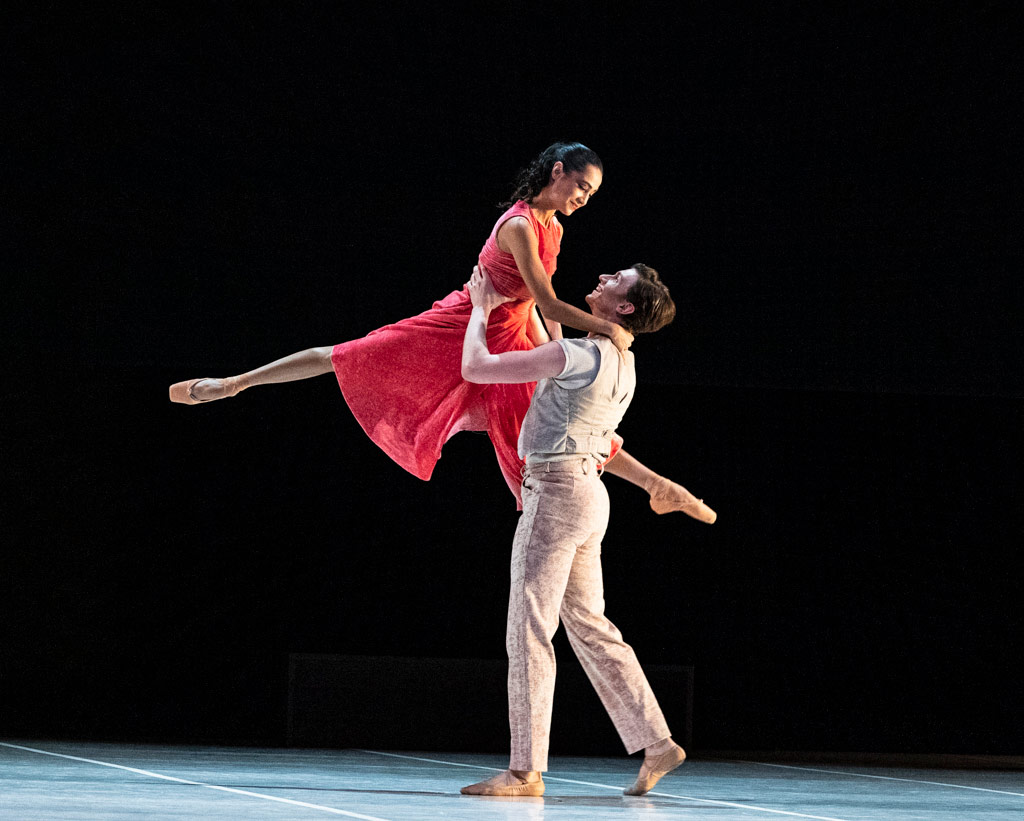
© Foteini Christofilopoulou. (Click image for larger version)
Hats’ off to Cathy Marston for her unwavering commitment to dance theatre. Her contribution to Unbound was inspired by the central human drama in Edith Wharton’s 1911 novella, Ethan Frome. Working with designer Patrick Kinmonth, Marston has focused on the emotional triangle between Ethan, a farmer trapped in poverty and a loveless marriage to Zeena (a hypochondriac) and his infatuation for their young helper, Mattie. You can always count on Marston for a spark of ingenuity in her narrative treatments, and here it is to embody the brutal snow that dominates the story (shades of Arthur Pita’s The Wind) in the human forms of an 11-strong corps de ballet.

© Foteini Christofilopoulou. (Click image for larger version)
Like Liang, Marston’s choreographic palette for Snowblind, mixes lyrical, classical steps with the grit of emotive contemporary movement and gesture. Ulrik Birkkjaer captures the stoical ambiguity in the title role, a man torn between honour and hope; Jennifer Stahl is tremendous as the bitter, pessimistic Zeena; and Mathilde Froustey, captivating as the beautiful and passionate Mattie. The final sequence is played out with haunting sensitivity to Arvo Pärt’s soulful Lamentate. Some aspects of the narrative are not immediately clear from the action on stage and I feel that there is a full-length work waiting to be built onto this material.
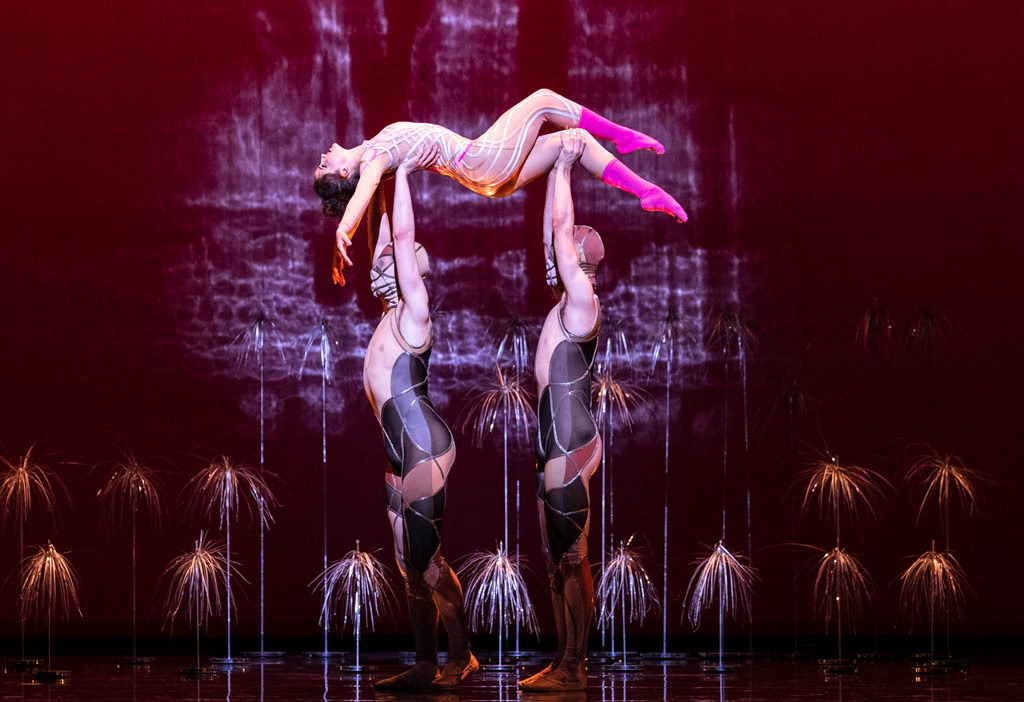
© Foteini Christofilopoulou. (Click image for larger version)
It is not that Arthur Pita’s ballet to a selection of Björk’s songs is particularly innovative – visually, it reminded me in places of Wayne McGregor’s Carbon Life and sundry work by Sharon Eyal and Gai Behar – but it is nonetheless a stunning spectacle born of a boundless creative imagination. Billed as a ballet rave, it is just the vehicle ballet needs to drive it into a new era; complete with nomadic and natural themes: a masked fisherman provides a symbolic anchor and tall palm-like grasses drop from the sky to be regularly rearranged by the dancers. It’s a futuristic fantasy on acid, inspired by Björk’s multi-layered lyrics that concern life, love, death and pretty much every emotion in between: a tremendous half-hour of contorted shapes, strange characters, ebullient dance, all driven by this timely reminder of the rhythmic force of great music.












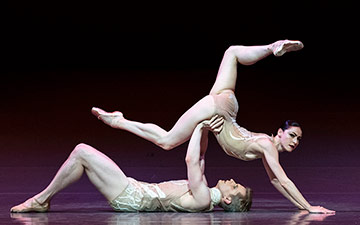


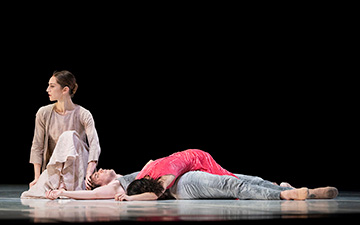
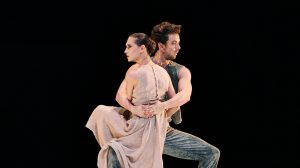
You must be logged in to post a comment.